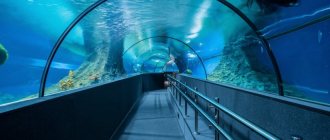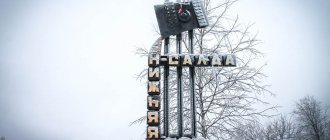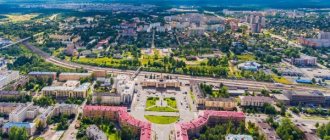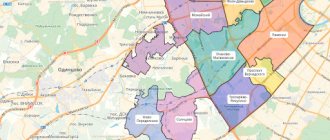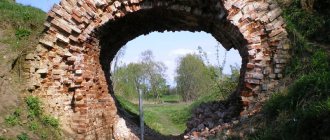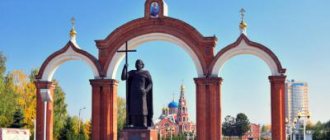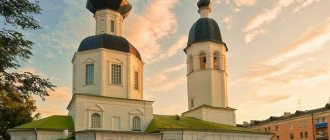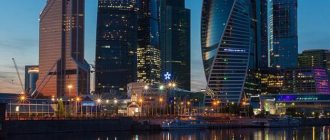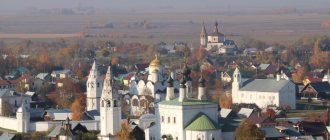Population of the Northwestern Federal District
In 2022, 13,972,061 people live in the Northwestern Federal District of Russia. Which is 9.52% of the total population of the country. Most of the city residents - 84.25%, half of the residents (51.76%) live in St. Petersburg and the Leningrad region. The remaining regions are sparsely populated.
Average life expectancy is 71.2 years.
Mortality exceeds birth rate by (-1).
The most numerous ethnic group is Russians (83.07%), and representatives of the following nationalities live in the district:
- Ukrainians (1.86%)
- Komi (1.53%)
- Belarusians (1.11%)
- Tatars (0.46%)
- Karelians (0.34%)
- Armenians (0.28%)
- Azerbaijanis (0.25%)
- Jews (0.18%)
- Germans (0.09%)
- Finns (0.11%)
- Nenets (0.06%)
- Gunzibians (0.06%)
- Vepsians (0.04%)
- Mordva (0.01%)
- Sami (0.01%) and others.
Petrozavodsk
The capital of Karelia, the largest city of the republic. But it doesn’t take much time to get from one point to another, and you can cross the entire city by car in 30 minutes. Moreover, it is not necessary to have a car here; all places in the city are accessible both on foot and by public transport, and during the season, many people even use bicycles.
North-West Russia: interesting cities to live [besides St. Petersburg] 6
The nature of Karelia is magnificent , many rivers and lakes guarantee excellent fishing, and the forests are rich in mushrooms and berries. From Petrozavodsk to the border with Finland is only 300 km, and to the Northern capital 420 km along an excellent road. Life in Petrozavodsk is characterized by regularity and lack of fuss; traffic jams are also not typical for this city.
City residents prefer locally produced products with a short shelf life. In addition to all this, Petrozavodsk is included in many tourist routes , which indicates its uniqueness in terms of the presence of many interesting places. And to live in the capital of this northern region you need much less money than in St. Petersburg or Moscow.
Brief description of the regions of the Northwestern Federal District
Arkhangelsk region (Arkhangelsk)
Occupies a large territory in the north-west of the country. There are unique natural landscapes here: islands, lakes, caves. Tourism to this region will give you a lot of unforgettable experiences. Most popular places:
- Plesetsk Cosmodrome in the city of Mirny
- Solovetsky Monastery (early 15th century)
- Open-air museum complex "Malye Korely"
- Kenozersky National Park
- Archipelago Franz Josef Land
- Pinega caves
- Solovetsky Botanical Garden
- Solovki lake-canal system
- The city of Kargopolye with a large number of cultural heritage sites and people who speak with a special dialect.
- Kiy Island (an annual jazz festival is held here, there is a rest house and the Onega Cross Monastery).
The region will delight you with its originality, special atmosphere and rich history.
Read more…
Vologda region (Vologda)
The visiting card is the city of Veliky Ustyug, the birthplace of Father Frost. But besides this, there is something else to see here:
- Vologda Kremlin (1567)
- Belozersky Kremlin (XV century)
- Temple complex Cathedral Courtyard (XVII century)
- Kirillo-Belozersky Monastery for Men (1397)
- Ferapontov Belozersky Monastery (1398)
- Architectural and ethnographic open-air museum in the village of Semyonkovo
- House-Museum of Peter I (XVII century)
- Brianchaninovs' estate (XIX century)
- Khvalevskoe estate (XIX century)
Among the natural attractions are the Padun Waterfall, the Russian North National Park, the Darwin Nature Reserve, and the Opoki Tract.
Read more…
Kaliningrad region (Kaliningrad)
German heritage is present throughout the region. It is not very well adjacent to Soviet buildings and is not always in good condition. Traveling around the region will allow you to take a tour of the history of Prussia and the sites of the Second World War.
Main attractions:
- Cathedral in Kaliningrad (restored)
- 7 city gates of Kaliningrad in Gothic style
- Amber Museum in Kaliningrad
- Museum and exhibition complex "Amber Castle"
- Citadel "Pillau" (XVII century)
- Fort No. 3 “King Frederick William I” (1879)
- Fort No. 5 - King Frederick William III
- Church of the Holy Family
- Insterburg Castle of the Teutonic Order (1336)
Natural places: Curonian Spit (World Heritage Site) and the Dancing Forest, Baltic Spit, Vishtynetskoye Lake, Lake Tikhoe in Svetlogorsk.
Read more…
Republic of Karelia (Petrozavodsk)
The main wealth of the republic is nature; eco-tourism and fishing are very popular here. One of the most beautiful places:
- Paanajärvi National Park
- National Park "Ladoga Skerries"
- Ruskeala Mountain Park
- Lake Onega
- Kivakkakoski Falls
- Kivach waterfall
- Ruskeala waterfalls
- Mount Vottovaara
There are architectural and historical values here: the Valaam Spaso-Preobrazhensky Monastery (XIV century), the Assumption Church in Kondopoga (XVIII century), the Kizhi Museum-Reserve, the White Sea and Onega petroglyphs.
Read more…
Komi Republic (Syktyvkar)
An amazingly beautiful region:
- Weathering pillars on the Manpupuner plateau (Mansi boobies)
- Yugyd Va National Park
- Pechora-Ilychsky Biosphere Reserve
- Mount Narodnaya is the highest point of the Urals 1895 meters
- Mount Manaraga - 1662 meters
You can get acquainted with the culture of local peoples in the Finno-Ugric ethnocultural park, which is located in the village of Yb. No less popular are the House-Museum of I.P. Morozov, the National Gallery of the Komi Republic, and the National Museum of the Komi Republic.
Read more…
Leningrad region (St. Petersburg)
The main decoration of the region and the entire Northwestern Federal District is the city of St. Petersburg. It's hard to mention as part of an article. He deserves a full story about himself, as he preserves the centuries-old history of our Motherland.
Read more…
Murmansk region (Murmansk)
Who would think that this region, associated with the harsh north, can offer quite an interesting tourist route.
- Khibiny mountain range on the Kola Peninsula
- Kandalaksha Nature Reserve, which includes several islands
- Seydozero with its steep banks
- The beauty of the Lapland Nature Reserve
- Kanozero petroglyphs dated to the 3rd-2nd millennia BC. e.
- Natural park "Sredniy and Rybachy Peninsula" and much more.
Read more…
Nenets Autonomous Okrug (Naryan-Mar)
- Nenets Nature Reserve in the Pechora Sea
- Natural monument “Stone City”
- Thermal tract Pym-Va-Shor
- Grand Gate Canyon
Read more…
Novgorod region (Veliky Novgorod)
The region is rich in historical attractions:
- Novgorod Kremlin (first mentioned in 1044)
- St. Sophia Cathedral (1050)
- Architectural complex Yaroslavovo Dvorishche (X-XI centuries)
- The Lord's Chamber (XV century)
- Yuriev Monastery (XI century)
- Spaso-Preobrazhensky Monastery in Staraya Russa (XII century)
- Vitoslavlitsy - open-air museum of wooden architecture
- House-Museum of F. M. Dostoevsky in Staraya Russa
- House-Museum of N. A. Nekrasov in Chudovo
- House-Museum of G. I. Uspensky in the village of Syabrenitsy
Among the natural places: Lake Seliger, Valdai National Park, Rdeisky Reserve.
Read more…
Pskov region (Pskov)
Travelers will also be surprised by the Pskov lands:
- Pskov Kremlin (XI-XII centuries)
- Men's Pskov-Pechersky Monastery (1473)
- Porkhov Fortress (1387)
- Izborsk fortress (XIV century)
- Thundering Tower (1525)
- Mikhailovskoye Museum-Estate (Pushkin’s family estate)
- Petrovskoye Museum-Estate (which belonged to Pushkin’s ancestors - the Hannibal family)
- Trigorskoye Museum-Estate (belonged to the Osipov-Wulf landowners, friends of Pushkin)
- Museum-Estate of S. Kovalevskaya
- Museum-Reserve of N. A. Rimsky-Korsakov
- Museum-Reserve of M. P. Mussorgsky
Among the natural attractions are the underground springs of the Slovenian Springs in Izborsk, Lake Peipsi, Sebezhsky National Park, and the Polistovsky Reserve.
Read more…
Kaliningrad
The westernmost city in the country. The city is quite large, but incredibly cozy and comfortable. Located on the shores of the Baltic Sea, the coastline of the region is 180 km of beautiful beaches. The Polish border is only 25 km from the city, that is, Europe is literally at your fingertips.
North-West Russia: interesting cities to live [besides St. Petersburg] 5
Many people move to it because of its wonderful mild climate. Kaliningrad is literally surrounded by greenery, and the grass grows here even in winter. The city has a rich history; it used to be called Königsberg and belonged to East Prussia, which explains the architecture of Kaliningrad, which is not typical for Russian cities.
The roads also differ for the better from most Russian roads. If we talk about food prices, they are lower than in “big” Russia. The creation of a special economic zone in 2022, offering a preferential tax regime , makes this area very attractive for business.
Other federal districts of Russia
Hot key
General impression
The small town is not suitable for the life of modern youth, but I liked it. The Alley of 1000 Pines, Dante's Gulch - these are simply unrealistically cool places.
Pros:
- the resort center of the city is developed (recreation center for adults and elderly people in 1970-80)
- in summer there are enough vacationers and tourists, the city does not seem empty
- the air is beautiful
- nature is magnificent
- delicious products
Minuses:
- it's very hot and there's nowhere to hide from the heat
- entertainment infrastructure is poorly developed, there is nowhere to go
- bad water
There are such cute houses
Sanatorium building
Ekaterinburg
According to many, this is the third capital of Russia. Currently, this industrial city is full of skyscrapers and continues to be rapidly built. The city has a rather turbulent history, since the great Russian storyteller Pavel Bazhov once lived here, and citizen Nikolai Romanov, who was once Emperor Nicholas, was shot here. Boris Yeltsin also studied second. Everyone who has seen Yekaterinburg claims that it is a typically European industrial city, so this is the place for lovers of urban landscapes.
Yaroslavl
General impression
I didn’t like the city; the city’s districts are geographically distant from each other. Yaroslavl became the main disappointment of the trip; there was a lot of hope for this city. Yaroslavl is out of the list of candidates for relocation due to the dirt on the streets.
Pros:
- very beautiful embankment
- very good shopping center Aura
- not far from Moscow
Minuses:
- very dirty, very
- everywhere, at every step there is graffiti. Almost all buildings are painted: Italian cafes, banks, even the second floors of buildings - it’s just terrible.
- bad roads
- sights have not been restored
- the houses are old and peeling
- small provincial town
- chilly
- a lot of poor people (judging by their clothes) and strange people
- expensive fare (18 rubles on the tram)
The beauty of the center of Yaroslavl
Garbage, also the center.
An architectural monument, protected by the state.
Such “artists” should be fined
Rostov-on-Don
General impression
I didn’t like the city, it felt like the authorities abandoned taking care of their city 5-10 years ago, but there are a lot of cafes, bars, cinemas, shops, and banks in the city. The current situation with Ukraine has left its mark: there are many refugees in the city, the stations are full of people who live there (probably temporarily), you will have to wait at the railway ticket office for at least 2 hours. The city seems dangerous for life due to its proximity to the border, drug addicts (so they say) and strange people on the streets, dark courtyards - it has dropped out of candidates for moving.
Pros:
- very developed entertainment infrastructure
- many people
- warm
- the city is very large, large and wide
- didn't see any traffic jams
- near the sea
- beautiful historical architecture
Minuses:
- stuffy even at night
- very dirty
- unkempt and peeling buildings
- very few shady places
- a lot of strange people
- dress ugly
- bad water
- near the border
- unfriendly people
- smog or smoke over the city
- bad yards
- gray city
- unkempt parks and roads
- the air smells sometimes
Administration building, the photo does not show how the plaster has peeled off in some places
Voronezh
General impression
I liked the city, it is somewhat similar to Krasnoyarsk. Candidate for relocation.
Pros:
- Big city
- Beautiful
- clean
- a lot of young people
- people dress well
- modern shopping centers
- well maintained parks
- warm and not hot
- inexpensive bus travel (only 12 rubles)
- good universities
Minuses:
- ugly embankment
- people say there are traffic jams
- somewhere in the region they are going to build a nickel plant
- Nearby nuclear power plant
- bad water
- low salaries
Some kind of administrative building, renovated by the way
Parks, benches
Beautiful "Soviet" architecture. Everything has been renovated. There are many such buildings, very large.
Kostroma
General impression
I liked the city, small and cozy. The city is too small for moving.
Pros:
- purely
- architectural monuments have been restored
- cozy city center
- The city's districts are not scattered geographically
- near Moscow
Minuses:
- small, provincial town
- chilly
Ipatiev Monastery, clean and restored.
A beautiful, ancient, wooden house from the Museum of Architectural Art.

